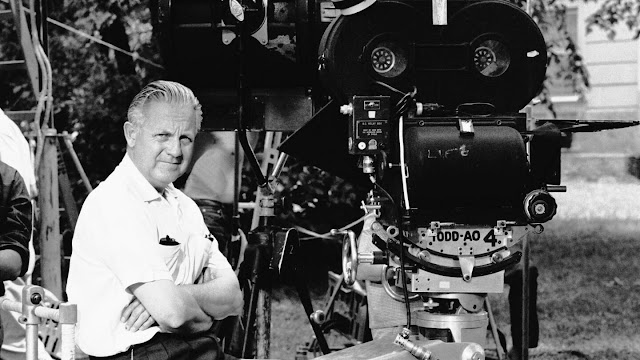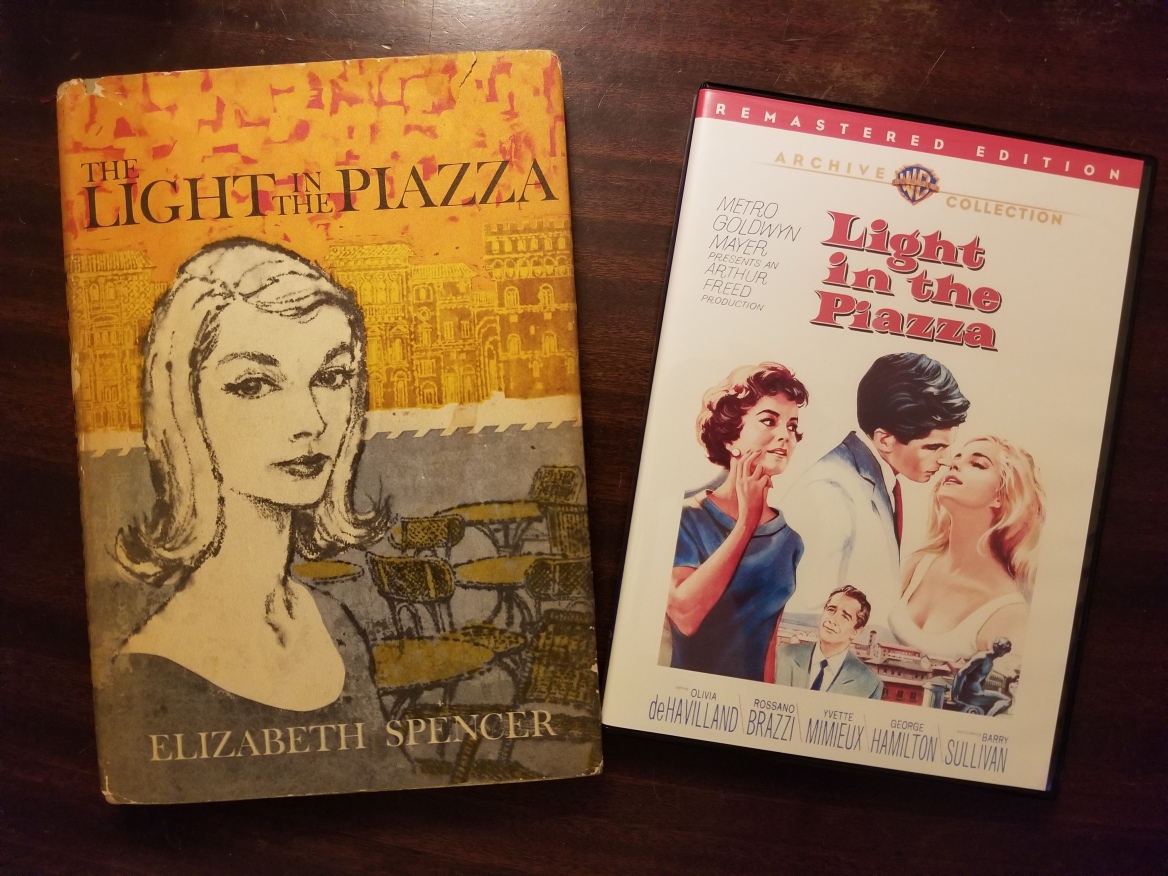Wednesday, December 29, 2021
Nightmare Alley (2021)
Tuesday, December 21, 2021
Interview with Sloan De Forest, author of The Essential Directors
 |
| Frank Capra |
 |
| Lois Weber |
 |
| Robert Wise |
“he had earned the moniker Master of Melodrama for his aesthetically lush tearjerkers that immersed Eisenhower-era audiences in a world of gilt-edged passion, enriched by his signature use of oversaturated Technicolor.”
Tuesday, November 30, 2021
TCM: The Essential Directors by Sloan De Forest
“Ultimately, the final list was based on each filmmaker’s influence on the medium, cultural impact, and degree of achievement.” — Sloan De Forest
What happens behind the scenes is sometimes more important that what we witness on screen. Film directors influence many aspects of the filmmaking process. They shape the look of a movie, add important themes, guide the actors to better performances, and can turn chaos into order. And in some cases the volatility they bring to the table inspires art. However, the role of a director, especially to those who've never worked on a movie set, can be a bit of an enigma.
Author Sloan De Forest provides movie buffs an excellent guide to the most influential film directors and their impact on film history. This carefully curated collection of directors, with figures from the beginning of film history to present day, highlights the importance of each individuals contributions as well as demonstrates the impact they had on a whole on how movies are made and how they influence culture.
On Howard Hawks — “racked up a multi-faceted filmography for himself in the decades between, not only criss-crossing into a variety of different genres but seemingly equal at home in all of them.”On W.S. Van Dyke — “a marvel of efficiency, a reliable studio journeyman who managed to inject streaks of creative brilliance into his rapidly shot movies.”
On Dorothy Arzner — “Arzner is set apart by her consistent success within the studio system... [she] made 16 features during her Hollywood tenure, and everyone focused on a central woman—always of the spunky, independent variety.”
On Leo McCarey — “McCarey’s movies are informed by a deep understanding of human nature, in all its hilarity and its heartache.”
On W.S. Van Dyke — “a marvel of efficiency, a reliable studio journeyman who managed to inject streaks of creative brilliance into his rapidly shot movies.”
On Nicholas Ray — “Perhaps the most subversive filmmaker to ascend the ranks in 1950s Hollywood, Nicholas Ray was a trained Method actor who brought a dark urgency to midcentury movies... [he was the] reigning king of misfits, outsiders, and tortured souls.”
On Fred Zinnemann — “he left behind a rich fourty-year legacy of handsomely crafted films, many of which concern individuals forced to choose between compromising their moral integrity and following their consciences.”
Saturday, November 27, 2021
It's a Wonderful Life: The Official Bailey Family Cookbook
George Bailey: There she blows. You know what the three most exciting sounds in the world are?
Uncle Billy: Uh huh. Breakfast is served; lunch is served; dinner...
George Bailey: I'll give you the moon, Mary.Mary: I'll take it. Then what?George Bailey: Well, then you can swallow it, and it'll all dissolve, see... and the moonbeams would shoot out of your fingers and your toes and the ends of your hair... am I talking too much?
Tuesday, November 16, 2021
TCM: Dean Martin: King of Cool
Premiering this week on Turner Classic Movies is the excellent documentary Dean Martin: King of Cool. Directed by Tom Donahue and produced by Ilan Arbodela, this film chronicles the life and career of Dean Martin, from his early days singing in the nightclub circuit, becoming one half of the outrageously popular comedy duo with Jerry Lewis, to his film career, his time with the Rat Pack and his personal struggles. We learn about how Dean Martin went from being part of a close knit Italian community in Steubenville, Ohio, to making waves in Hollywood and Las Vegas. Martin was the epitome of cool and part of this was his sense of mystery. He kept everyone, including his family members, at arms length. He went by the notion of "keep yourself to yourself" and lived his life as a menefrigista (he who doesn't give a f***). Martin was also just an extraordinary talent. He mastered singing, drama, comedy and dance, was the consummate host and improvised with the best of them. There were no mistakes. He kept rolling with the punches and everyone loved his mesmerizing personality.
“What an incredible, joyous labor of love it has been to tell the story of one of the 20th Century’s greatest entertainers... The more I learned, the greater and deeper my appreciation and affection for this man became.” — Tom Donahue
What's truly extraordinary about this documentary is the sheer number of people who were interviewed. Half the fun is seeing so many familiar faces, including Martin's peers, friends, family and even classic film authors (whose books I've reviewed on this blog!).
Dick Cavett
Florence Henderson
Angie Dickinson
Lainie Kazan
Carol Burnett
Barry Levinson
Todd Fisher
Jon Hamm
James Kaplan
Jeanine Basinger
Henry Jaglom
and many many more
Dean Martin: King of Cool airs Friday November 19th with an encore screening Friday November 26th. Check out the dedicated Dean Martin line-up programmed for each evening:
8 PM ET — Dean Martin: King of Cool (2021)
9:30 PM ET — The Caddy (1953) – A master golfer suffering from performance anxiety caddies for a man he's taught everything.
11:15 PM ET — Rio Bravo (1959)
Friday, November 26
8 PM ET — Ocean’s 11 (1960)
10:15 PM ET — Robin and the Seven Hoods (1964)
12:30 AM ET — Dean Martin: King of Cool (2021)
Saturday, November 13, 2021
Classic Film Book Haul and Luis Buñuel Memoir Review
I've been busy over on my YouTube channel creating some fun classic film themed videos for you all! Two recent ones include a classic film book haul with lots of great novels and two non-fiction selections as well as a review of Spanish filmmaker Luis Buñuel's memoir My Last Sigh. I hope you'll check them out. Please make sure you subscribe as I'm posting videos every Saturday!
Sunday, October 24, 2021
Kino Lorber Studio Classics: Lilies of the Field (1963) and The Organization (1971)
I'm hoping to get videos up weekly. Would love to hear your thoughts on types of videos you'd like to see!
Saturday, October 9, 2021
Kino Lorber Studio Classics: Arise, My Love (1940) and No Time for Love (1943)
Check out my latest YouTube video where I review two Kino Lorber Studio Classics Blu-rays: Arise, My Love (1940) and No Time for Love (1943). Both are Paramount films directed Mitchell Leisen and starring Claudette Colbert. Arise, My Love (1940) is a light romantic drama set in WWII starring Ray Milland. No Time for Love (1943) is a hilarious screwball comedy starring Fred MacMurray and also featuring Ilka Chase and June Havoc.
Sunday, October 3, 2021
Woodstock Film Festival: Horton Foote: The Road To Home
 |
| Photo by Susan Johann |
"As a writer you strive for a sense of truth." — Horton Foote
Playwright Horton Foote (1916-2009) had been honored with many awards and nominations in his lifetime including Emmy awards, Tony nominations, the National Medal of Arts and a Pulitzer Prize for Drama. He won the Academy Award for Best Adapted Screenplay for To Kill a Mockingbird (1962) and the Academy Award for Best Original Screenplay for Tender Mercies (1983). But chances are, despite his widespread recognition, you may not have heard his name.
Directed by Anne Rapp, Horton Foote: The Road to Home shines a spotlight on a talented and sensitive writer who was often misunderstood and underappreciated by Hollywood. Foote grew up in Wharton, Texas, a small town that would be the inspiration for his many plays for theater, television and film. His original stories were inspired by his local community. He changed real names to fictitious ones and Wharton transformed itself into Harrison, Texas, to protect the locals, and frankly himself from scrutiny. He was particularly attracted to sensitive characters who faced great challenges but still continued on. His stories weren't grandiose nor were they commercial. But they were powerful. And unlike many of his peers, Foote wrote great parts for women. Vulnerable but strong, these women were central to the stories and not just moving pieces that only served the plot.
In the 1950s and 1960s, Foote wrote many teleplays for shows like American Playhouse, The Dupont Show of the Mount, Playhouse 90 and more. He preferred to write original pieces or adapt his own work but would sometimes adapt other writers work to screen. Foote almost turned down the opportunity to adapt Harper Lee's To Kill a Mockingbird to screen but was convinced by his wife and business partner to give it a go. The result was a resounding success with Foote winning, much to his surprise, his first Academy Award. For Foote, adapting another writer's work was something he did sparingly. He really had to like the material and sympathize with the writer. He called it a painful process because it required him to be both involved in the material and to also be objective. Hollywood saw potential in Foote but didn't know how to work with him. Foote took criticism well however he was firm in his convictions. His work had to be authentic and true to his vision. A commercial writer he was not. He wrote many movie screenplays but only a handful made it to the screen with To Kill a Mockingbird and Tender Mercies being his best known work.
"A gentle, sweet man who had a sharp eye and a sharp mind." — Edward Albee
Rapps' documentary takes the viewer on a journey into the world of Horton Foote. There are interviews with Foote's daughters as well as Edward Albee, Robert Duvall, Matthew Broderick, directors, actors, filmmakers and others who worked with Foote during his lifetime. Although Foote died in 2009, the documentary has a lot of footage of Foote talking about his life and career, his love of Wharton and his never ending desire to tell stories. Throughout the film are theatrical scenes, mostly acted out soliloquies from Foote's theatrical plays.
Horton Foote: The Road to Home is a loving and tender tribute to a great dramatist.
Tuesday, September 21, 2021
2021 Summer Reading Challenge: Final Roundup
Shadow of a Doubt by Diane Negra
 |
| Image Source: Jess of Box Office Poisons |
 |
| Image Source: Jessica of Comet Over Hollywood |
 |
| Image Source: Molly of Welcome to Classic Mollywood |
Popular Posts
-
Traveling from the Missouri River to the valleys of Oregon, being a pioneer on the Oregon Trail was a hard life. The journey was so tre...
-
Little Elbert Coplen Jr. went on to make a splash in Hollywood that didn’t last past the toddler stage. At the tender age of 8 ...
-
Every December I cling to one Christmas film which I proceed to watch over-and-over again. Last year it was Holiday Affair (1949) and the ye...
-
Greetings fellow readers! I'm proud to introduced the newest classic film related books publishing in the second half of 2025. There is ...





























